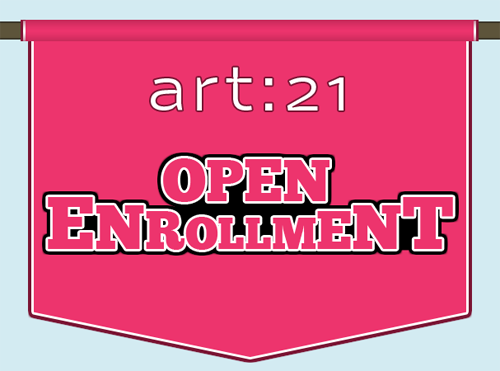Sometimes when I’m sitting in class, I switch to a third-person perspective and feel like I’m watching a reality television show about myself. One of my professors, Clark Buckner, assigned each student to present an artist, collective, or movement in his class, “Contemporary Art and the Psychopathology of the Everyday Life.” I coupled my third-person experience here at San Francisco Art Institute’s grad program with my interest in all that is Bravo’s Work of Art: The Next Great Artist to present a collective known as WANGA and a movement known as RTV (reality television). Like all movements since the 19th century, journalists were in the mix when creating the discourse of the process of art production, so it’s only appropriate that several bloggers—defined here as art contributors with a strong online presence that include Emma Allen, Jennifer Dalton, Tyler Green, Paddy Johnson, Wesley Miller, Carolina A. Miranda, Bill Powhida, Karen Rosenberg, Jerry Saltz, Hrag Vartanian, and Edward Winkleman—were the ones who created the language around the collective and movement I presented.
I claimed a laundry list of elements that defined the RTV movement:
1. Challenges / Competition
2. Denial of Research / Emphasis on Memory
3. Limited Time / Improvisation
4. Mentor Guidance
5. Product Placement
6. Storytelling
7. Parasocial Relationship / Celebrity
8. Collective Construction through Data
9. Resistance to Correct Celebrity / Legalities
10. Filtered Experience of Art
I’ll have to describe it in further detail at another time or on my own personal blog, but the CliffsNotes version goes something like this.
The reality competition show is a kitsch version of an MFA program. For me, my ultimate goals from my MFA program might be fulfilled more concretely from a stint on Work of Art that includes my projected list of this new process of making art in the twenty-first century. My two-year program (limited time) includes graduate tutorials (mentor guidance) and critique seminars filled with “I’m really interested in…” (storytelling). But, I want more. I want competition, celebrity, and product placement to be celebrated rather than ridiculed. I want the drive for a scholarship, residency, or solo show to be a valid part of ‘why’ someone made a work of art. I want to know that my celebrity in my program was fueled by the current construct of ‘being part of the artistic community’—a community of two-hundred and twelve students—and not by a crude attempt to be famous. I want to rest easy knowing that my use of Jell-O®, Safeway® sprinkles, and Pottery Barn® accessories is no different from someone using red, blue, or white paint.
Too soon? OMG, I’m having a mid-grad crisis. I’m curious to know how many students drop out of BFA and MFA programs after realizing that personal artistic endeavors are better reached in other arenas. I thought I’d make a splash in the art blogosphere and announce today, right here, that I’ve had it with my MFA program and I’m calling it quits so that I can audition for the next recruits of the WANGA collective. But I can’t, because something deep down inside of me is keeping me right where I am. Damn you, SFAI—I wish I knew how to quit you!
